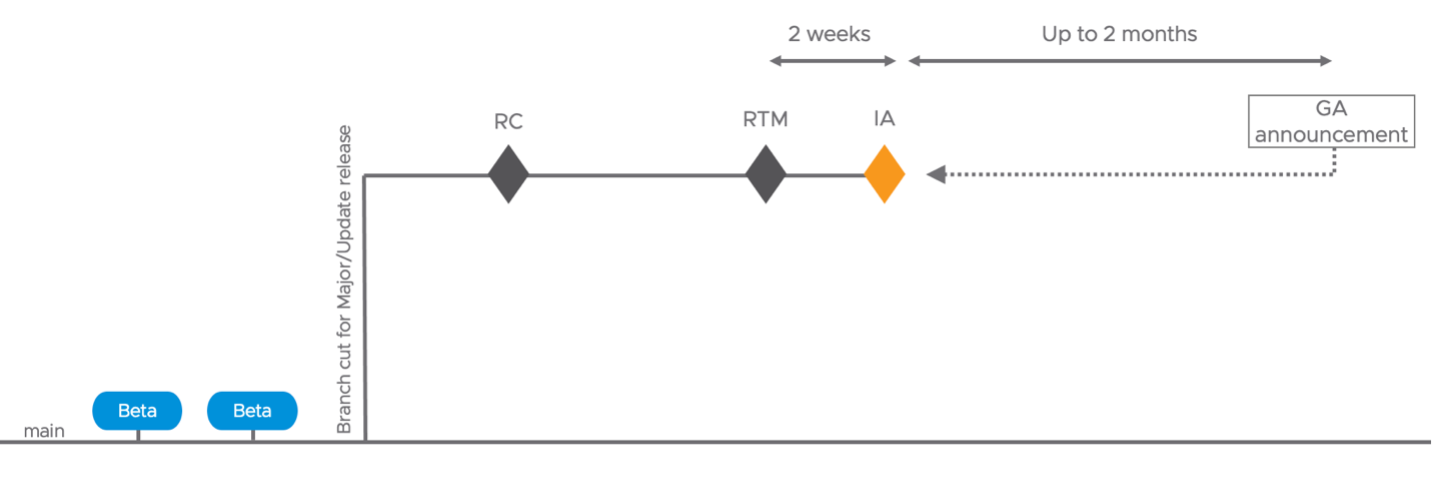Improving vSphere Confidence: vSphere 8’s new Release Model
It seems like VMware has listened to the overall feedback that they have received. Usually sysadmins do not agree with each other on a large scale. But one opinion was broadly agreed on; vSphere’s QA was horrible (*insert production is QA meme here*).
Thankfully, VMware has listened to us. On October 5th, they published this blog post.
Starting vSphere 8, there will be a new release model. There will be two phases, IA and GA.
Currently, there is just GA, which usually tends to be a production ready version. However, with vSphere to have something that can actually be deployed in production, you take the current GA release and wait 6 extra months. This is also why companies still run on vSphere 6.7, as starting with vSphere 7, bugs and major issues became come common to appear in GA releases.
Thankfully, things are changing. As I started before, there will now be a IA and GA release, to quote the blog post: “Our intent going forward is that all major and update vSphere releases will be delivered first with an IA designation. An IA release is a production-quality release that meets all GA quality gates and is fully partner certified. IA releases will be available during the IA phase to all customers for production deployments.
We will follow up once we determine each release has achieved sufficiently wide adoption and announce the transition of the release to a GA designation. We expect this to typically happen after 4-6 weeks from IA.
For every major release we will publish any information we find during the IA period to raise confidence that the release is proven in customer environments at scale.
Changing to this IA/GA model is motivated by several factors. Most importantly, feedback from customers who want us to be more explicit when a release has achieved strong traction and usage without having to wait for the next update release, which they sometimes use as a proxy. By switching the designation from IA to GA, we’ll be making it clear when the release has gained wide adoption. We think this is a better model than waiting for a 6-month update, particularly as these updates now include feature enhancements as well as net new features.“
To illustrate:

Hopefully this will end up going well and will improve the confidence for vSphere administrators in the vSphere product line. Only time will tell.